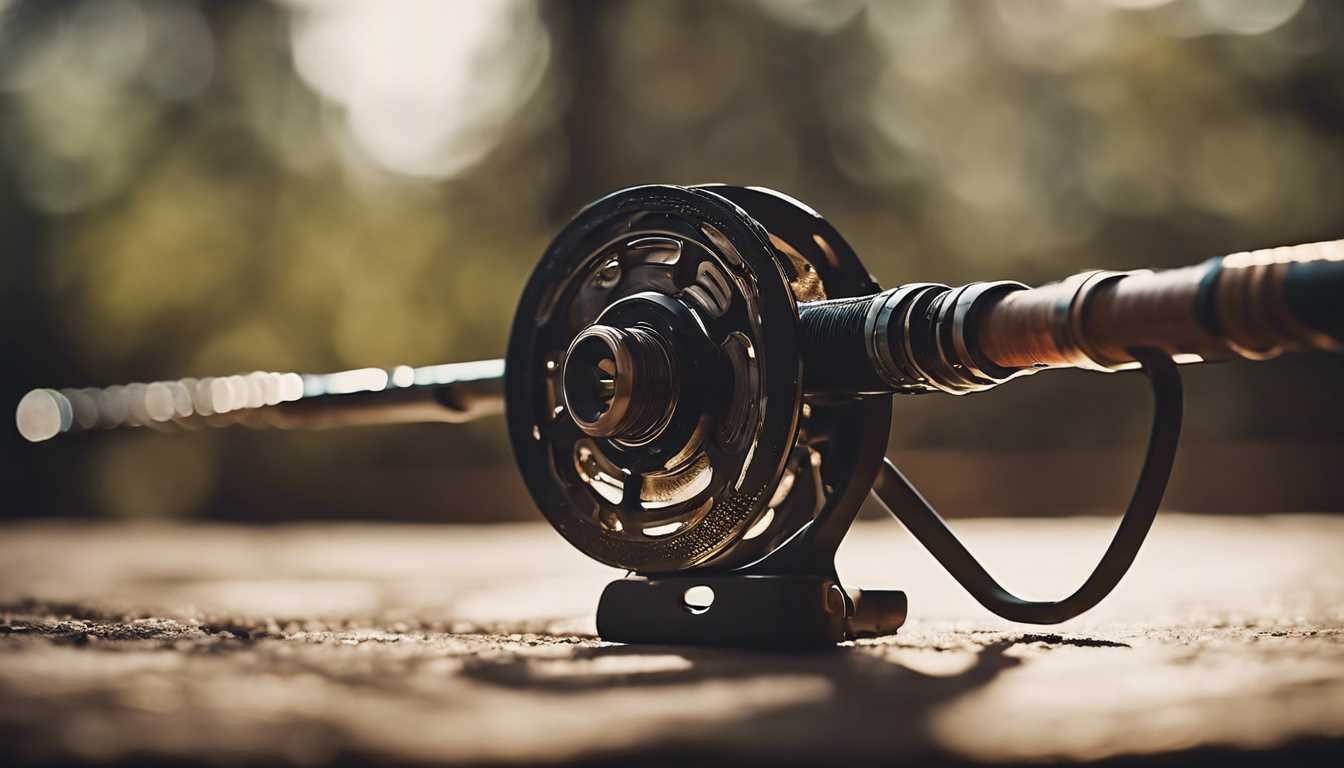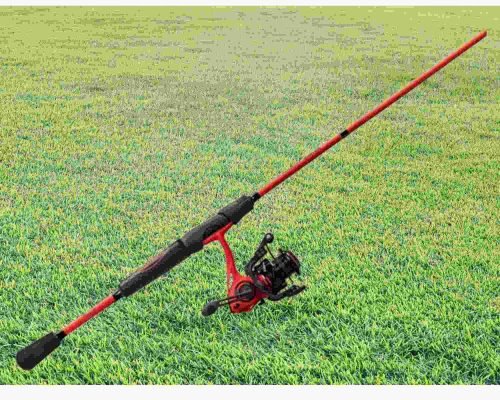Fly fishing is an enjoyable and rewarding pastime, but you won’t get the best results with just any old rod. To ensure your fly fishing experiences are as successful as possible, you must learn how to cast a fly fishing rod correctly. Even for experienced anglers, getting the technique right can be tricky.
That’s why I’m here to provide easy steps for casting a fly fishing rod like a pro every time! Once you’ve got the basics down, you’ll catch fish like a champ in no time.
Let’s look at some simple tips that will help you become an expert quickly. Whether you’re new to fly fishing or have been doing it for years, these steps will help ensure your next outing is better than ever.
Choosing The Right Rod
Casting a fly fishing rod is an art that can be learned with practice and patience. Choosing the right rod is the first step to becoming a master of the craft.
When selecting a rod, there are two main factors: rod weight and line type. Rod weight is determined by casting distance and the size of the fish you’re after.
Generally, heavier rods are used for larger fish and longer casts. Lighter rods, meanwhile, are ideal for smaller fish and shorter casts.
The type of line you’ll use also affects your choice of rod weight. For example, if you plan to use floating lines, choose a slightly lighter rod than normal; if you’re looking at sinking lines, go a little heavier than usual.
To ensure success on the water, choosing the right equipment for your needs is important. Take the time to select a rod that perfectly fits your style of casting as well as your target species of fish.
With careful consideration of both these factors, you will have taken the first steps towards perfecting your fly fishing technique and achieving mastery over this timeless art form.
As we prepare the line, remember to take your time – quality is always more important than quantity when it comes to successful fly fishing!
Preparing The Line
First, attach your fly line to the backing line on your reel. This can be done quickly and easily with an Arbor knot.
Then, you’ll want to attach your fly reel to your rod. This is done with a simple screw on the reel seat, and you’re all set to get out there and hit the water!
Attach Fly Line
Attaching the fly line to your reel is essential in preparing for a successful day of angling.
We’ll start by loading the reel, which is relatively straightforward if you follow a few simple steps.
First, thread the end of the line through both eyes at the tip of your rod and then tie it off with an arbor knot, ensuring it’s secure and won’t slip out during casting.
Next, spool your line onto the reel by hand, choosing not to loosen or overlap it as you go.
Once that’s done, you can attach your leader to the end of your line using a loop-to-loop connection.
After that, use your chosen casting technique to get your fly on target – this will depend on personal preference and expertise level – and be ready for action!
With these easy steps, you’re all set for a fantastic day on the water.
Attach Fly Reel
Once the fly line is attached to your reel, you can select the right fly for the job.
This is a crucial step in ensuring a successful day of angling – after all, using the wrong fly won’t get you very far!
The fly you choose should depend on the conditions and species of fish you’re targeting.
A knowledgeable guide or local bait shop can be invaluable at this stage, helping you select the perfect lure for a successful outing.
After your fly selection is complete, it’s time to practice your casting technique.
Whether it’s roll-casting, overhead casting, or something else entirely, mastering this skill will take some time and effort, but it’ll be worth it when you start catching that big one!
Making The Cast
Setting up a fly fishing rod for the cast is an essential part of the process. Start by standing slightly sideways to your target, facing it as much as possible.
Your stance should be comfortable and balanced. Ensure that your feet are shoulder-width apart and that your weight is evenly distributed on both feet.
Once you are in position, hold the rod with your dominant hand and ensure you have enough line out for the cast. Now that you are set up and ready to go, let’s talk about casting technique.
Start the cast by pushing the rod forward in a straight line, beginning from the 10 o’clock position of your body and ending at 2 or 3 o’clock (for right-handed casters). Keep your non-dominant arm near your body to provide stability and leverage during this movement.
As you reach 2 or 3 o’clock, stop pushing forward with your arm and raise the tip of the rod further away from you using only your wrist.
This will cause a loop formation in the line as it is propelled forwards toward its target. As soon as all of the energy has been released from the cast, it is time to move on to executing stop and start motion with precision and accuracy.
Executing The Stop And Start Motion
Making the cast is just the beginning of successful fly fishing. After setting up your equipment and ensuring it is in good working order, mastering the stop-and-start motion is essential for a successful fly fishing experience. The first step in mastering this complex but rewarding cast is to practice with a single haul.
A single haul cast is an exciting way to gain control over your rod and line when casting. It involves shortening the line by pulling it towards you with one hand while releasing it with the other hand. This creates tension in the line and helps create a more powerful cast.
Here are three steps that will help you master this technique:
Setting Up:
- Ensure your rod and reel are properly set up so they can easily handle and maneuver while casting.
- Attach the backing onto your reel, tie on a leader and tippet, then attach your fly.
- Finally, ensure that your rod is loaded correctly before starting to cast.
Casting Technique:
- Stand in an open area with plenty of room to perform a full backcast without obstruction or injury.
- Extend your arm forward at eye level, then begin to make a slow backcast as you pull on the line with one hand while releasing it with the other hand simultaneously.
- When you reach the 10 o’clock position of your backcast, flick your wrist sharply in an upward motion as you release both hands from the line (for left-handed casters, reverse these directions).
Execution:
- As soon as you feel tension created by hauling in the line, immediately stop all movement of both hands at the 10 o’clock position (or 2 o’clock for left-handed casters).
- Then bring both hands together again at the 12 o’clock position and repeat these steps until you have completed your desired number of casts.
With some practice and basic knowledge of technique, anyone can become an expert caster capable of performing powerful casts with precision and accuracy! With the confidence gained from mastering single-haul techniques, aspiring anglers can move on to advanced techniques such as double hauls, which provide even more power for long-distance casts.
Mastering The Double Haul Cast
The double haul cast is the foundation of fly fishing. It’s a versatile technique that allows you to read currents and accurately land your fly in the right spot.
To master this cast, start by looping your line behind you. With a smooth motion, use your free hand to extend the loop forward before bringing your rod tip down toward the water.
This creates tension in the line that helps propel it forward. Once you’ve done this, you can move on to finer points of casting technique, such as adjusting line speed and controlling loops.
Focus on developing an even rhythm with each stroke to improve accuracy with your double haul casts. The key is to practice consistently until muscle memory kicks in and you no longer think about each action while performing them – they become second nature.
As you become more comfortable with this casting style, experiment with different strokes and rhythms so you understand how they affect the outcome of your casts.
With enough practice, mastering the double haul cast will become easier over time – giving you greater control over where your flies land and improving your success rate on the water!
Conclusion
I’ve been fly fishing for years, and I’m here to tell you that mastering a cast can be done with practice.
Once you know how to select the right rod, prepare your line, and execute the stop-and-start motion, you’ll be well.
The double haul cast is the final touch – but it’s worth the effort. You’ll soon be able to cast like a pro with patience and persistence.
Fly fishing is a rewarding experience – don’t forget to enjoy it!







